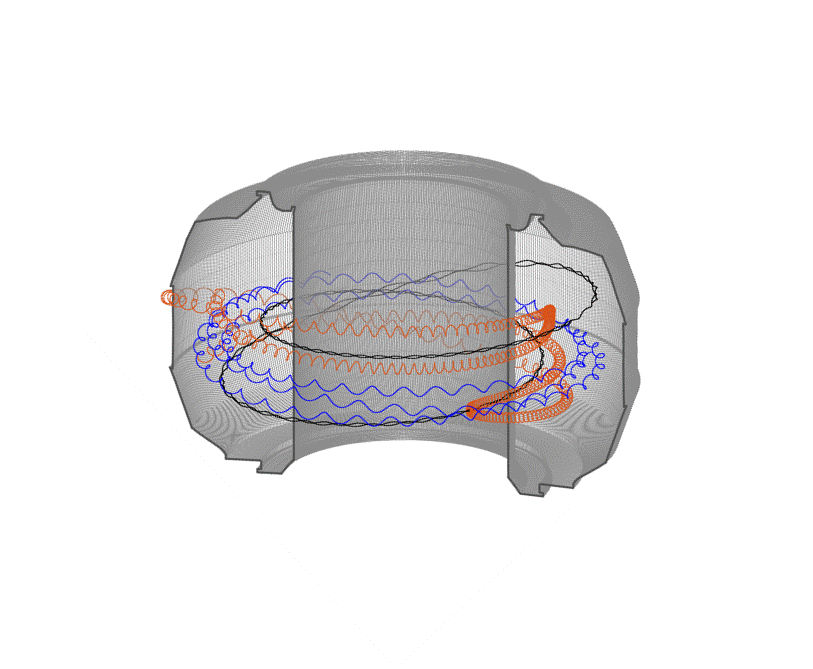
Filter News
Area of Research
- Advanced Manufacturing (2)
- Biology and Environment (11)
- Clean Energy (35)
- Computational Engineering (1)
- Computer Science (3)
- Electricity and Smart Grid (1)
- Fusion and Fission (12)
- Fusion Energy (10)
- Isotopes (9)
- Materials (32)
- Materials for Computing (1)
- Mathematics (1)
- National Security (14)
- Neutron Science (10)
- Nuclear Science and Technology (11)
- Nuclear Systems Modeling, Simulation and Validation (1)
- Quantum information Science (2)
- Sensors and Controls (1)
- Supercomputing (14)
News Type
News Topics
- (-) Advanced Reactors (23)
- (-) Clean Water (15)
- (-) Cybersecurity (20)
- (-) Fusion (23)
- (-) Grid (36)
- (-) Isotopes (23)
- (-) Physics (28)
- 3-D Printing/Advanced Manufacturing (74)
- Artificial Intelligence (43)
- Big Data (24)
- Bioenergy (39)
- Biology (39)
- Biomedical (28)
- Biotechnology (10)
- Buildings (31)
- Chemical Sciences (38)
- Climate Change (44)
- Composites (18)
- Computer Science (97)
- Coronavirus (28)
- Critical Materials (23)
- Decarbonization (27)
- Education (3)
- Element Discovery (1)
- Energy Storage (72)
- Environment (78)
- Exascale Computing (10)
- Fossil Energy (2)
- Frontier (16)
- High-Performance Computing (39)
- Hydropower (6)
- Irradiation (2)
- ITER (5)
- Machine Learning (24)
- Materials (92)
- Materials Science (83)
- Mathematics (2)
- Mercury (5)
- Microelectronics (1)
- Microscopy (27)
- Molten Salt (7)
- Nanotechnology (38)
- National Security (21)
- Net Zero (5)
- Neutron Science (76)
- Nuclear Energy (45)
- Partnerships (28)
- Polymers (21)
- Quantum Computing (13)
- Quantum Science (36)
- Renewable Energy (1)
- Security (12)
- Simulation (15)
- Space Exploration (13)
- Statistics (2)
- Summit (27)
- Sustainable Energy (75)
- Transformational Challenge Reactor (4)
- Transportation (60)
Media Contacts

Fusion scientists from Oak Ridge National Laboratory are studying the behavior of high-energy electrons when the plasma that generates nuclear fusion energy suddenly cools during a magnetic disruption. Fusion energy is created when hydrogen isotopes are heated to millions of degrees...

The Department of Energy’s Oak Ridge National Laboratory is now producing actinium-227 (Ac-227) to meet projected demand for a highly effective cancer drug through a 10-year contract between the U.S. DOE Isotope Program and Bayer.

Scientists at the Department of Energy’s Oak Ridge National Laboratory are the first to successfully simulate an atomic nucleus using a quantum computer. The results, published in Physical Review Letters, demonstrate the ability of quantum systems to compute nuclear ph...

Geospatial scientists at Oak Ridge National Laboratory have developed a novel method to quickly gather building structure datasets that support emergency response teams assessing properties damaged by Hurricanes Harvey and Irma. By coupling deep learning with high-performance comp...

A new Oak Ridge National Laboratory-developed method promises to protect connected and autonomous vehicles from possible network intrusion. Researchers built a prototype plug-in device designed to alert drivers of vehicle cyberattacks. The prototype is coded to learn regular timing...

After more than a year of operation at the Department of Energy’s (DOE’s) Oak Ridge National Laboratory (ORNL), the COHERENT experiment, using the world’s smallest neutrino detector, has found a big fingerprint of the elusive, electrically neutral particles that interact only weakly with matter.

Virginia-based Lenvio Inc. has exclusively licensed a cyber security technology from the Department of Energy’s Oak Ridge National Laboratory that can quickly detect malicious behavior in software not previously identified as a threat.

Through a network that consists of hundreds of low-cost monitors that plug into standard 110-volt outlets, GridEye can play a role in ensuring the reliability of the nation's power grids. The system, developed by researchers at Oak Ridge National Laboratory, provides real-time information about dyna...


